#and talbot crown
Photo


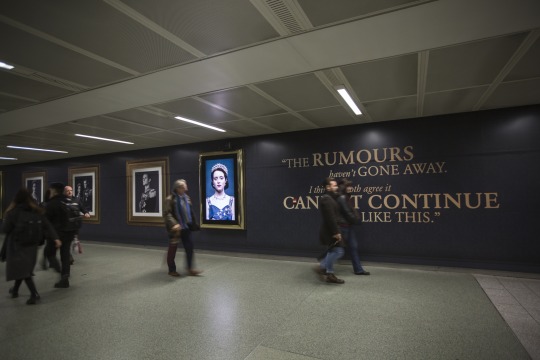

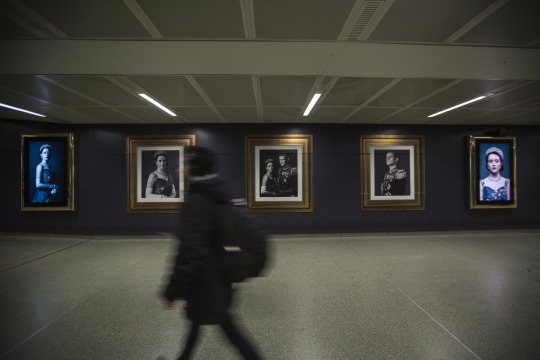
The Crown Season 2 promotion at London’s St Pancras Immersion Zone in 2017. “The eye-catching vinyl features royal “portraits” of the series’ main cast, framed with a metallic gold finish, adding to the premium impact.” Photo: JCDecaux ♚
#matthew goode#claire foy#matt smith#vanessa kirby#the crown netflix#the crown season 2#the crown#the crown cast#best actress#princess margaret#best actor#lord snowdon#anthony armstrong-jones#tony armstrong-jones#emmy nominated#matthewgoode#henry talbot#a discovery of witches#matthew clairmont#freud's last session#ad campaign#st pancras#london#thecrownnet#netflix#advertising#portraits
4K notes
·
View notes
Text
Here’s the thing I need people to understand:
Even if we believe that the (entirely unproven and far too politically convenient) pre-contract story between Edward IV and Eleanor Talbot was true, it doesn’t actually matter. Even if it was hypothetically true, there was still no reason why Edward V – who was already King at that point and was referred to as such – couldn’t have been able to succeed his father regardless.
David Horspool (Richard's own historian) summarizes it better than I could, so I’m just quoting him here:
"[Richard also made] no allowance for any potential solution to the problem that might have re-legitimized Edward V and his siblings. These included securing a retrospective canonical or papal judgement of the invalidity of the pre-contract; an Act of Parliament legitimizing the children of Edward and Elizabeth Woodville’s marriage, as happened to Henry VIII’s variously tainted offspring; or even ignoring the issue and proceeding to the coronation of Edward V, which would legitimize him by making him the Lord’s anointed, and render allegations of his bastardy as newer versions of the old tittle-tattle about his father."
In short, even if Edward IV truly had a pre-contract with Eleanor Talbot, and even if all of his children with Elizabeth Woodville were supposedly illegitimate, it should by no means prevent Edward V from succeeding his father to the throne. If Richard truly wanted to support his nephew, he had a variety of useful and entirely workeable options to choose from. Instead, he officially declared his nieces and nephews (including a literal 3-year-old) illegitimate, kept Edward V and his even younger brother confined in the Tower of London, and declared himself King.
Why didn't Richard take these actions, all of which he would have been well aware of? As Horspool says simply: "that Richard took none of these courses was because he had no interest in doing so."
The ONLY conclusion we can come to based on Richard's actions is summarized most succinctly by A.J Pollard:
"The truth of the matter is that Richard III did not want Edward V to be legitimate because he did not want him to be king."
#r*chard iii#richard iii#my post#edward iv#princes in the tower#imo this is the main crux of the argument#it DOESN'T MATTER if the pre-contract story was actually true#even if it was true there was no actual reason why Edward V couldn't have been crowned regardless if Richard had truly wanted to support hi#sorry I saw something annoying on Twitter and wanted to rant#(I wasn't even searching for it lol it just popped up; it's very annoying)#I saw a bunch of people quoting John Ashdown-Hill (yeah that guy) on the fact that Eleanor chose to deed some of her property to her sister#Elizabeth Talbot during her lifetime rather than leave it to her in her will#and using this to argue that Eleanor considered herself married to Edward and as a married woman unfortunately could not bequeath real#property by will without her husband's consent#which is absolutely ridiculous considering the fact that#A MARRIED WOMAN ALSO COULD NOT DEED PROPERTY WITHOUT THE PERMISSION OF HER HUSBAND#Eleanor choosing to deed property to her sister during her life proves that *she did not consider herself married to anyone at the time*#Which ... should be extremely significant and indicative!#and should in fact settle the argument once and for all#I don't know how Ricardians have somehow twisted it and claim the opposite#anyway im done ranting. bye
48 notes
·
View notes
Text


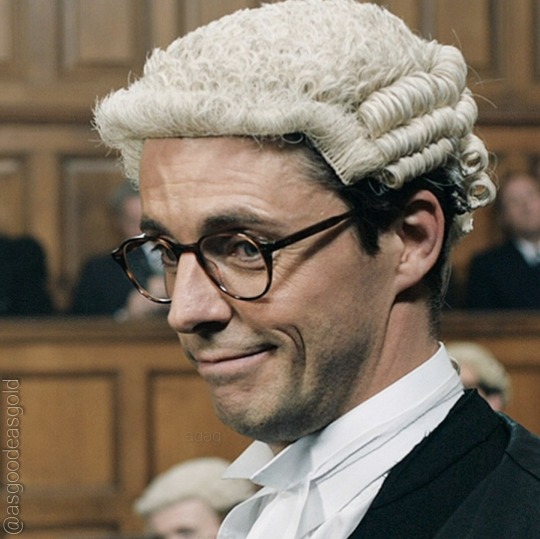

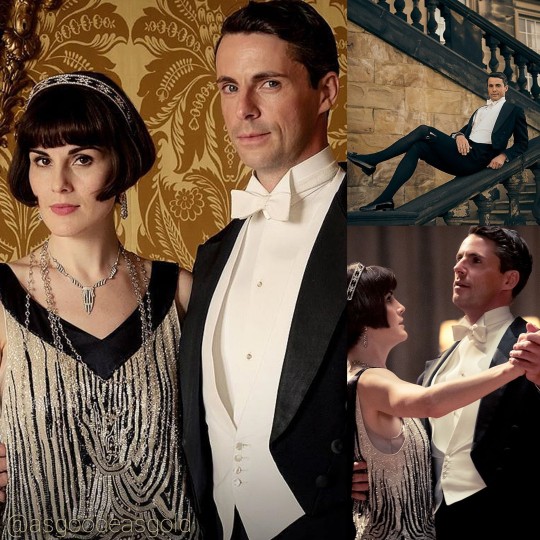
Matthew Goode's on-screen royal connections
There is a big royal event today or so I have been told so here is Matthew Goode in royally connected roles (some more tenuous than others, indulge me 🤣):
1) Antony Armstrong-Jones married a princess
2) King Sigismund of Hungary aka The Red Fox (but he was a bad'un)
3) Jeremy Hutchinson Queen's Counsel (that's a senior trial barrister in the UK)
4) Matthew Roydon, Queen Elizabeth I's shadow (spy)
5) Lady Mary and Henry Talbot looking beautiful for the ball given in honour of King George V and Queen Mary's visit at Downton.
📷 Netflix The Crown (2016) s2:07, Medieval (2022), The Duke (2022), Sky/Bad Wolf A Discovery of Witches (2021) s2:09 my edits
📷 My edit from promo pics for Downton Abbey the movie (2019) courtesy of matthew-goode.net
#matthew goode#michelle dockery#the crown netflix#the crown season 2#medieval movie#a discovery of witches#adow#adow s2#downton abbey movie#downton abbey#henry talbot#king sigismund#antony armstrong jones#matthew roydon#jeremy hutchinson
43 notes
·
View notes
Text

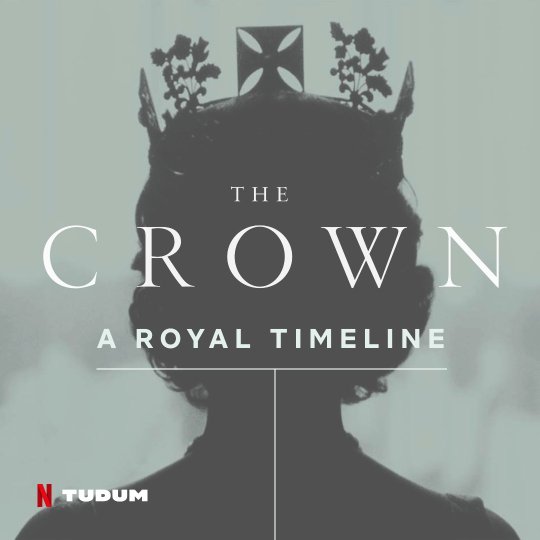
SEASON 2 EPISODE 7
Princess Margaret Marries Antony Armstrong-Jones
May 6, 1960: After years of falling for a variety of “wrong” men, Princess Margaret meets the rakish Antony Armstrong-Jones (Matthew Goode), a one-time portrait photographer of Queen Elizabeth and Prince Philip, at a dinner party in 1957. The two begin dating in secret almost immediately and upon unexpectedly receiving Elizabeth’s approval, they marry on May 6, 1960, in the first televised royal wedding at Westminster Abbey. Hurray for Margot!
On Set: When it came to styling Tony, costume designer Jane Petrie wanted him to be “a really cool, ’60s guy that Margaret would obviously be drawn to — a little bit dangerous, a little bit edgy, anti-establishment.” ♚
-The Crown: A Royal Timeline, Netflix Tudum
#matthew goode#vanessa kirby#the crown netflix#emmy nominated#best actor#the crown season 2#anthony armstrong jones#tony armstrony jones#lord snowdon#dashing#rebel#princess margaret#tony x margaret#the crown#60s#matthewgoode#henry talbot#a discovery of witches#matthew clairmont#adow#goode performance
48 notes
·
View notes
Text
THE ADVISOR'S GAME ;
[DEMO]

You are an assassin, a professional, a contract killer. The pay is good, and your clientele are more than happy to keep your identity well under wraps. You take whatever work comes your way, and you don't ask questions.
Until.
An anonymous job offer. An envelope with cash, an image of your target with surprisingly crisp quality, and a non-descript note, left on the doorstep of your home.
'Kill the eldest royal for the other half of your pay.'
That's how you ended up here. Undercover in the royal palace. As the newly appointed royal advisor.
---
Are you a bloodthirsty killer, or do you kill out of pure necessity? Do you want to fish around for your mysterious employer, or do you want to live in blissful ignorance?
Make or break alliances, and maybe (reluctantly) fall for someone, as you navigate the intricacies of royal life, all while trying to figure out exactly why you were sent on such a risky job (and by who).
Do try not to get fired, and good luck.
★
"The Advisor's Game" is an 18+ (for mentions of death/violence, non-descript gore, etc.) mystery-romance, with 5 (subject to change) gender-selectable romance options, as well as cast of characters to befriend or antagonise.
[note; one RO will be gender-locked non-binary, however all ROs will be romanceable by any gender of MC]

NSFW TAG (to block, if wanted); a palace scandal
[more under the cut]
ROMANCE OPTIONS;
[AGES]
A. Bellefleur ; Aleron - Alize / the crown royal (your target) / m/f
The (supposedly) well-loved eldest child to the reigning monarchs, they appear in public regularly and often participate in council meetings— clearly someone takes issue with this...probably.
A. has lightly freckled ivory skin and grey-blue eyes, in similar fashion to their siblings. Their hair is a dark-ish auburn and messily cut to the top of their ears (fem A. has it similarly messy, however it falls to their chin in choppy waves)
[neutral to friends (to lovers) ; neutral to disliked ; neutral to respected]
★
K. Valiev ; Kostya - Katja / the head guard / m/f
An odd figure, unassuming, almost strangely approachable. They are quiet, and kind, and always smiling...so why do the older guards seem terrified of them?
K. is an olive skinned individual with a small scar running up over the right side of the jaw, and their eyes are dark brown. Their hair is a chestnut brown and is kept in tight curls, though they occasionally braid them (when they have time).
[friends to lovers ; neutral to friends (to lovers) ; friends/neutral to disliked]
★
A. Caras ; Altair - Arali / the royal physician / m/f
Their bedside manner leaves much to be desired, they are no nonsense to the point of being borderline rude, yet the whole palace sings their praise as though they are an angel (you don't see it, personally, but maybe you will eventually).
A. is an individual with vitiligo, leaving patches of their naturally sienna skin instead a pale ivory, as well as whitening some strands of their fringe. Their eyes are a bright green, and their honey blond curls are kept short (fem A. has longer curls, around chest length, that she keeps up in a ponytail for work).
[neutral to respected ; neutral to disliked ; neutral to friends (to lovers)]
★
T. Bellefleur ; Talbot - Tallis / the middle royal / m/f
The younger, but not youngest, sibling to the crown royal. They don't like you much (then again they don't like many people much), but you're not sure about that knowing glint in their eye when you interact— what do they see in you?
T. has heavily freckled beige skin and almost eerily pale blue eyes. Their hair is a fiery auburn and cut into a messy undercut (fem T. has shoulder length hair, covering an undercut at the back).
[enemies? to friends (to lovers) ; enemies? to respected]
★
M. Serrel ; Marin / your fellow assassin / nb
You had to do a double-take when you saw them, and so did they, it seemed someone wanted you two in the palace at the same time...but why?
Marin is a sienna skinned individual, with hazel eyes (on the greener side) and almost black-brown hair. Their hair just brushes their shoulders in length and falls in soft waves, though they quite often have it pulled into a half up bun/ponytail.
[rivals to friends (to lovers) ; friends (to lovers) ; friends to rivals ; friends to friends with benefits (to lovers)]
★
NOTE; for all romances MC must befriend the RO of their choice first, otherwise they won't consider anything beyond some light flirting. Additionally, in the case of A. Caras and T. Bellefleur, the romances will be slower burn (especially Caras).
#interactive fiction#twine game#twine if#twine wip#current wip#if game#masterpost#if intro#tag-if#the advisor's game
952 notes
·
View notes
Text
Privateers
Privateers were legalised warships that were issued with a letter of marque by their principal, which authorised them to attack and plunder enemy ships in times of war. These ships were usually outfitted by a syndicate of merchants or other private financiers who invested capital in the hope of substantial profits. Although the government that placed such orders usually received a percentage of the profits, the actual benefits went beyond these monies. The privateers not only disrupted the flow of goods and supplies to enemy ports, but essentially provided the Crown with fighting ships that cost no more than a piece of parchment and a willing crew. This practice can be traced back to 1273, when Edward I of England used privateers against the French.

The celebrated English privateer squadron known as the 'Royal Family' engaging enemy ships during the War of the Austrian Succession. Commanded by Captain James Talbot, the squadron initially consisted of three armed ships, the 500-ton 30-gun flagship Prince Frederick, the 300-ton 20-gun Duke (Captain Morecock) and the much smaller Prince George, by Charles Brooking 1723-1759 (x)
Once a plunder was boarded, the general rules of plunder determined how the ship was to be plundered. Anything above the main deck was considered fair game for the ship's company and as such was unaccountable to those who had financed and equipped the expedition. Needless to say, this system could easily be abused, as sailors often secured items from the hold that they later found on the main deck. The booty itself was usually divided into ship plunder and cabin plunder, the former being fair game for the crew, while the latter was reserved for the captain of the privateer ship. He usually came out ahead, including the all-important nautical charts and navigational information about enemy waters. Many a captain accused of crossing the fine line between privateer and pirate saved his skin by presenting such documents to a grateful, indulgent monarch.
As soon as a ship was captured, it was seized and, depending on the circumstances, disposed of. The ship could be sailed to the privateer's home port and there placed in the hands of eager merchants - a good choice if it was particularly rich or captured near the end of the voyage - or it could be stripped of its cargo and all other valuables and sunk or set free, depending on the whim of the privateer. Another alternative was to prepare the ship so that it could serve as a privateer herself.

Two privateer vessels (Pride of Baltimore - left and Lynx -right), reenact a battle of the War of 1812 in Boston Harbor during Boston Navy Week 2012 (x)
In the remote colonies, goods were usually so scarce that the local merchants (even in hostile ports) would not think of buying the privateers' goods, even if they knew they had probably been stolen by their countrymen. The last resort was to call at the nearest friendly port and sell the ship. This was not appreciated, because the goods and the ship itself had to be presented to the prize court before they could be legally sold, but now and then they were written off as a loss.
However, it should also be borne in mind that privateers were often on the verge of legality, because as soon as the war situation changed, their status also became illegal. Therefore, it was often difficult to know exactly what was going on, and some of them quickly found themselves in the realm of piracy and could then be demoted from a celebrated privateer to an outlaw pirate and punished accordingly.
157 notes
·
View notes
Text
Matthew Goode
The British actor appeared as Adam’s love interest Declan O’Callaghan in Leap Year. Following his role in the rom-com, Goode appeared in several other films, including 2011’s Burning Man, 2013’s Stoker, 2013’s Belle, 2014’s The Imitation Game and 2015’s Self/less. Goode has made a name for himself on television as well starring as Henry Talbot in Downtown Abbey, Finley Polmar in The Good Wife, the 1st Earl of Snowdon on The Crown, Matthew Clairmont in A Discovery of Witches and Robert Evans in The Offer.
In January 2010, Adams opened up about getting the opportunity to work with Goode.
“He’s so great and funny and smart,” she said in an interview with SheKnows at the time. “America is just going to love him. He brought so much to this role. He enjoyed playing Declan. I love the character of Declan. He was perfect in it.”
22 notes
·
View notes
Text
Masterpost: Royal Authors
This is a text version of the original list I curated, which can be found here. The royals are listed chronologically based on their first name (not title). The books are listed with the oldest book first & most recently published book last.
Some of the mentioned people have published books or lent out their names for books as private citizens; this post & the original list only cover royal members & books published under their royal title. This means that some books & some people have been excluded due to not falling under those criteria.
Note: Some of the following links are affiliate links, which means I earn a commission on every purchase. This does not affect the price you pay.
Princess Akiko of Mikasa
Reconsidering early modern Yamato-e: perspectives from Japan, the UK, and the USA (2013)
Japan: Courts and Culture (2020)
Princess Alice, Duchess of Gloucester
The Memoirs of Princess Alice Duchess of Gloucester (1983)
Memories of Ninety Years (1991)
Catherine, Princess of Wales
Hold Still (2021)
Puzzles for Spies: The brand-new puzzle book from GCHQ (2022)
King Charles III
The Old Man of Lochnagar (1980)
Tomorrow is Too Late - A Celebration of Our Wildlife Heritage (1990) (with Sir David Attenborough, among others)
The Prince's Choice: A Personal Selection from Shakespeare by the Prince of Wales (1995)
Harmony: A New Way of Looking at Our World (2010)
Harmony: A New Way of Looking at Our World - Children's Edition
One Is Deeply Concerned: The Prince Charles Letters, 1969-2011 (2011)
The Prince's Speech: On the Future of Food (2012)
The list is too long; that man puts his name on literally everything. Check the page for more.
Princess Christina, Mrs Magnuson
Days at Drottningholm (2016)
Diana, Princess of Wales
British Sign Language: A Beginner's Guide (1988)
PEOPLE OF THE 90's: In Aid of the Malcolm Sargent Cancer Fund for Children (1995)
Hannah Riddell: An Englishwoman in Japan (1996)
Head Injury: A Practical Guide (1997)
King Edward VIII, Duke of Windsor
Launch! A Life-Boat Book (1932)
A King's Story: The Memoirs of the Duke of Windsor (1951)
The Crown and the People, 1902-1953 (1953)
Prince Edward, Duke of Kent
Jackie Stewart's Principles of Performance Driving (1986)
Australia Bound!: Story of West Country Connections, 1688-1888 (1988)
Deep into Blue Holes: The Story of The Andros Project (1989)
The Institution of Industrial Managers: A History 1931-1991 (1991)
The Story of E. H. Shepard: The Man Who Drew Pooh (2000)
Tribal Odyssey: A Photographic Journey Among Tribes (2000)
Chasin' the Sound: Tales and tunes from the career of Pipe Major Brian B Heriot, Scots Guards (2016)
A Royal Life (2022) (his memoir)
One Crew: The RNLI's Official 200-Year History (2024)
Queen Elizabeth, The Queen Mother
The Country Life Book of Queen Elizabeth The Queen Mother (1978) (actually by Charles & Godfrey Talbot, not her)
Henrik, Prince Consort
Fit for a Royal Dane: Gastronomic Views and Recipes of Prince Henrik (2002)
Meghan, Duchess of Sussex
Together: Our Community Cookbook (2018)
Princess Michael of Kent
Crowned in a Far Country: Portraits of Eight Royal Brides (1986)
Cupid and the King: Five Royal Paramours (1991)
The Serpent and the Moon: Two Rivals for the Love of a Renaissance King (2004)
A Cheetah's Tale (2017)
Princess Märtha Louise
Why Kings and Queens Don't Wear Crowns (2004)
The Spiritual Password: Learn to Unlock Your Spiritual Power (2014)
Emperor Naruhito
Costume at Castle Howard (1975)
The Thames and I: A Memoir of Two Years at Oxford (1993; 2006; 2019)
Queen Noor
Art of Jordan: Treasures from an Ancient Land (1991)
Landmines and Human Security: International Politics and War's Hidden Legacy
Leadership and the United Nations: The International Leadership Series (2003)
Leap of Faith: Memoirs of an Unexpected Life (2003)
Breaking Ground: From Landmines to Grapevines, One Woman's Mission to Heal the World: Transforming Mines to Vines (2020)
Prince Philip, Duke of Edinburgh
The Duke of Edinburgh's World Tour 1956-1957 (1957)
Selected Speeches 1948-1955 (1957)
Prince Philip speaks: 1956-1959 (1960)
Environmental Revolution: Speeches on Conservation, 1962-77 (1978)
Men, Machines and Sacred Cows (1984)
Down to Earth: Speeches and Writings of His Royal Highness Prince Philip, Duke of Edinburgh, on the Relationship of Man With His Environment (1988)
Survival or Extinction: A Christian Attitude to the Environment (1989)
The list is too long. Check the page for more.
Queen Rania
The Sandwich Swap (2010)
Prince William, Prince of Wales
Blown Away: From Drug Dealer to Life Bringer (2022)
Puzzles for Spies: The brand-new puzzle book from GCHQ (2022)
Earthshot: How to Save Our Planet (2021)
The Earthshot Prize: A Handbook for Dreamers and Thinkers: Solutions to Repair our Planet (2023)
(this post & the original list is a work in progress & will be updated whenever "new" books come on my radar)
#royal watching#literature#affiliate links#pinned post#british royal family#japanese imperial family#swedish royal family#danish royal family#norwegian royal family#jordanian royal family
9 notes
·
View notes
Text
Character Introduction: Alden


Firebringer,
Follow the raven. We must speak of peace. Your hands are stained. Let us begin to wash our sins together.
House Toahé of Sarona
Lord Alden Edward Talbot Ilstad comes from a long line of water genasi, warriors and scholars who earned names for themselves by becoming pivotal figures during the war. Alden is no exception.
He is a level 10 Oath of the Crown Paladin / Artificer, and gained his notoriety—as well as the name Firebringer—by building weapons for his nation in wartime. He's constructed a variety of explosives, and wields the first gun, named Revkash.
Alden, after realizing the horrific damage his weapons could do, turned his back on his nation and the war effort. He became a traitor to the crown, upholding his oaths to the people of Avirtris. He joined a rebel faction hoping to seize power from the King, Nad Theik, but their partnership ended when the rebels attacked a war council with one of Alden's weapons. Both Alden's father and the Crown Prince, Nad Jayli, were killed.
Now, Alden's on the run as a wanted criminal. He's torn between the ideals of protecting his people and the love for his nation, and the harsh truth of what hailing from a colonizing nation means. With the help of his adopted sister, and a merry band of adventurers who might hate him, he might be able to find a happy ending on the other side of the war.

11 notes
·
View notes
Text
No counting chickens..
Or eggs. Or ducks. Or anything else. From Instagram confirmation of Georgia calling Anna her neighbor and their little girls making cookies together (SO DAMNED CUTE).
However, ah, I don't think that Michael and David are permanent neighbors.
(Well unless now Michael has two homes and if he does dang okay bruv. Use that Good Omens money to make us all slather at the very thought of you living next to David and being BFFs forever.)
The reason I say this is because of WHY Michael moved to Wales. He wanted to make a difference there, and use his fame as an actor to help the people who lived in extreme poverty. He did an amazing ad for De-evolving the Crown with the wind turbines project, bringing that money back TO Wales (like 800 MILLION POUNDS the fuck). He fronts a lot of Welsh charities, including ones for literacy and the arts. I can't see him giving that up long term. He's such an advocate for his people.
However ... he is doing a play at The National, and I doubt he wanted to leave Anna all alone with a four year old and a two year old. It's like a three hour drive ONE WAY from London to Port Talbot.
So POSSIBLY he found himself, Anna, and the kids a place like, NEXT DOOR to David, Georgia, and the Tennant crew. Like for six months while he does rehearsals, all the publicity for his movie and the play, go and stare lovingly at David while David does MacBeth.
You know.
As you do.
Do I want them to live next door to each other and we get Staged 4 with them being neighbors and hijinks?
.... Maybe.
yes.
However I do respect Michael's commitment to the Welsh people.
So! In conclusion, ah, I hope Michael made a lot of money and now has two homes and then David is going to buy a home in Wales and we'll have the Tennasheebergs. I just don't think it's likely.
... Prove me wrong!
Please.
6 notes
·
View notes
Note
Hi, I've only recently gotten interested in the Wars of the Roses and since I am unable to find an unbiased analysis, I wanted to ask: what do you think of Eleanor Talbot and the idea that she was allegedly married to Edward IV?
The more I research the claim, the more incredulous I get that it's often taken so seriously, particularly by Ricardian circles. I'm very skeptical about the fact that this supposed marriage was kept secret for ... 19 years? Even more? Logically, it is not possible for a piece of information that explosive and nationally relevant to stay under lock and key for that long, especially considering Edward's political enemies. I've read some pieces on Eleanor and the most any of them can do is theorize that she may have been romantically involved with Edward at some point before May 1464. But a potential affair hardly means marriage; as far as I can tell, Edward IV appears to have had affairs with lots of women, but Elizabeth Woodville was clearly the one he wanted as his wife and queen, and obviously the only one who was acknowledged and honored as such. From what I can make out, I don't think he would have had that much difficulty getting out of the marriage if he particularly wanted to: considering it was very private, his public acknowledgement of it was crucial, and his word would have triumphed whatever Elizabeth or her family would say; people gathering at Reading to find a way to end it or persuade him to end it did not amount to anything; Wake's witchcraft allegations against Jacquetta directly relating to their marriage which were cleared by Edward's council; even the fact that Elizabeth Woodville did not produce a son until 7 years after she became queen. He very clearly wanted to remain married to her even though he did have potential routes out of it. I've also observed that people tend to link the circumstances of his marriage to Elizabeth and alleged marriage to Eleanor and call it a pattern of behavior, without considering the fact that once again, being involved with someone doesn't automatically mean marriage, and that it's very possibly a deliberately constructed pattern/parallel by the people making the allegations.
And it seems awfully, almost embarrassingly convenient that this came up after both parties were dead, when Richard was actively slandering his brother's licentousness, and when he wanted to usurp the throne from his 12 year old nephew when neither he (Edward V) nor his mother (Elizabeth Woodville) were in a position to assert themselves.
Of course, we'll never truly know for sure but ... what do you think?
Hi! To get straight to the point, there is simply no evidence that Edward IV had been married to anyone other than Elizabeth Woodville. You'd think ricardians would be more careful about this claim since they make such a big deal out of the lack of material proof linking Richard to the murder of the princes (actually king and prince) in the Tower, but no. Lack of evidence doesn't work both ways in this case, apparently.
As many historians have pointed out, parliament, which ultimately ruled that Edward IV had committed bigamy and invalidated his marriage with Elizabeth Woodville, simply did that on the grounds that it was ‘the common opinion of the people and the public voice and fame is throughout the land’. Although parliament could legislate over the succession of the crown, it had no jurisdiction to invalidate anyone's marriage, since only the Church had authority over those matters at that time. If there were any proof that Edward IV had really been married to Eleanor Talbot/Butler, Richard and his supporters would have called an ecclesiastical court made exclusively of prelates and representatives of the pope to rule over that case based on canon law, as that was the Church's prerogative since the 12th century. A. J. Pollard made a very apt observation about this:
Had Richard lll been the deeply troubled, honourable and honest man we are asked to believe him to be he would surely have followed the course of a properly constituted investigation.
Ruth Mazo Karras has a great book called Unmarriages: Women, Men and Sexual Unions in the Middle Ages where she presents many cases of marriages judged by the church to have been clandestine or invalid and actually explains how the Church came to have a monopoly on the legislation of marriages. Jennifer Ward cites an example of an illegal marriage claim taken to the Pope and casts light on how the investigation of an ecclesiastical court should have proceeded in face of the pre-contract allegations made by Richard and his supporters:
This issue of legitimacy and therefore of inheritance was at the heart of the best-known twelfth-century case, concerning Richard de Anesty, dating from 1158-63. Richard claimed to be the heir of his uncle, William de Sackville, on the grounds that William's only child, Mabel de Francheville, was illegitimate. If Mabel had been legitimate, she would probably have inherited her father's land. Richard alleged that William had broken his marriage contract with Albereda de Tresgoz and married Mabel's mother, Adelicia, daughter of Amfrid the sheriff. William and Albereda were said to have expressed present consent, and, according to Richard's account, Albereda asserted that she was William's lawful wife at his wedding to Adelicia, but failed to be heard because of the crowd and because William turned a deaf ear. She was later granted a decree by the bishop of Winchester and Pope Innocent II that William should return to her as her husband. Mabel argued, however, that the marriage contract with Albereda only amounted to betrothal, and that both Albereda and William had agreed to end it; the relationship had never been consummated and William had returned Albereda's dowry. William and Adelicia's marriage had been carried out in the face of the church, and Albereda's father had been present at the wedding feast. The annulment of the marriage by the bishop was null and void. For Alexander III the annulment was the crucial issue, and Mabel was adjudged illegitimate.
We can make a few observations about this case. First, notice how William's alleged first wife, Albereda, sought the Bishop of Winchester then the Pope himself to protest against William's second marriage and have it annulled. Why wouldn't Eleanor Talbot, the daughter of the Earl Shrewsbury and NIECE of the Earl of Warwick, who had such influence over Edward IV's early reign, be silent about Edward IV's second marriage? It's not like she was a helpless nobody who wouldn't have anyone to vouch for her case in the papal court. Moreover, according to a Burgundian report about the revelation of Edward and Elizabeth's marriage, many dissatisfied lords tried to come up with means to annul the marriage, as anon cited in this ask. Knowing this, and having the possibility to be backed by number #1 dissatisfied noble in the kingdom, Warwick, why wouldn't Eleanor have spoken against Edward and Elizabeth's union at that time?
Second observation: notice how both parties concerning the legitimacy of the marriage of William and Adelicia, namely Richard and his cousin Mabel, had to testify in front of the court and produce witnesses, documents and/or reports that attested to their claim that the marriage was valid or invalid. There was never anything even remotely close to this in the case concerning Edward IV's marriage. Where was the appeal to the Pope? Where were the witnesses of Edward IV's first marriage testifying in a clerical court? In fact, we don't even actually know for sure who claimed to be witness to Edward IV's alleged first marriage. The document approving Richard's rule, Titulus Regius, only claimed that it was 'the common opinion of the people and the public voice and fame' but never actually cited anyone as an actual witness to the alleged first marriage of the king.
No contemporary English source gives the name of a witness. Robert Stillington, Bishop of Bath and Wells, is only cited as the author of the bigamy claim and the only witness of the alleged first marriage in a French chronicle by Philippe de Commynes, a servant of King Louis XI. Commynes goes as far as to call him 'ce mauvais evesque', that is, 'this evil bishop'. That Commynes' claim is plausible comes from the fact that one of Henry VII's first actions after Bosworth was to order Bishop Stillington's arrest. If we accept that Stillington had helped Richard by concocting the pre-contract claim—and ricardians must accept it otherwise there's simply no name to validate their theory—the picture we're left with is not pretty. One, Bishop Stillington had previously been imprisoned by Edward IV in 1478 so Stillington was hardly an unbiased witness against Edward IV.
Two, in 1472 whilst he was still Edward IV's Chancellor, an office Stillington exercised up until 1473, he took part in a ceremony recognising the legitimacy of Edward Prince of Wales as Edward IV's heir. Along with the Archbishop of Canterbury and eight other 'Lords Spiritual' (that is, prelates) and thirty-six 'Lords Temporal' (that is, noblemen) Stillington solemnly swore to Prince Edward that
that in case hereafter it happen You, by God’s disposition, to outlive our said Sovereign Lord, I shall then take and accept You for true, very, and righteous King of England, &tc. And faith and truth to you shall bear.
If Bishop took part in that ceremony knowing the boy was illegitimate, he should have acted so as to either speak against it (admittedly, difficult to do), decline to take part in the ceremony by faking an illness or some other excuse (possible), or seek ways to legalise the king's current marriage by way of appeal to the papal courts, something people in irregular marriage situations did all the time. See to what lengths John of Gaunt went to have his Beaufort children legitimised. It seems scarcely possible that Edward IV, who was careful enough to orchestrate ceremonies to invest his son Edward as England's heir and recognise his authority over charters and conciliar bodies, would have left his heir as vulnerable to the law as ricardians claim he did.
Another point to the whole pre-contract story, is that it seems to have been only a later addition to the reasons Richard 'was offered' the crown. According to Mancini, Richard's affiliates' first idea was to claim Edward IV was a bastard (and his children unable to rule consequently). Ricardians claim Mancini was a foreigner and simply misunderstood the terms that were preached at St Paul's Cross, but The London Chronicler also believed that the first version that was preached was that Edward IV himself was illegitimate. Mancini tells us that the claim was not well received by the audience, so it makes sense that Richard's supporters would have quickly dropped it. The claim is lightly touched upon in the parliamentary act approving Richard's rule in the observation that Richard was his father's undoubted heir and the only one born in England. It alludes, of course, to the fact that Edward IV was born in France and George of Clarence in Ireland, as if subtly casting doubts about their legitimacy.
Lastly, even if the pre-contract story was true, it still by no means should be a definite reason to make Edward V unable to succeed his father. As Horspool has pointed out, solutions to that problem included 'securing a retrospective canonical or papal judgement of the invalidity of the pre-contract; an Act of Parliament legitimizing the children of Edward and Elizabeth Woodville’s marriage, or [...] proceeding to the coronation of Edward V, which would legitimize him by making him the Lord’s anointed'. Hypothetically, if parliament was competent to declare Edward V illegitimate enough to overrule an ecclesiastical court, it was equally competent to declare the boy legitimate. In face of all these possibilities to legitimise his brother's heir, Pollard has the correct assessment of the situation:
The truth of the matter is that Richard III did not want Edward V to be legitimate because he did not want him to be king.
Considering Richard made no effort to sustain his nephews' right to rule, as had been asked of him in his condition as Lord PROTECTOR, the pre-contract allegation must be seen in that light: a poorly sustained, entirely unevidenced excuse to justify an act of usurpation.
49 notes
·
View notes
Text





Matthew GoodE and Jenson Button photographed by Charlie Gray
#matthew goode#flawlessgentlemen#mancandykings#a discovery of witches#matthewgoode#henry talbot#downton abbey#downton abbey movie#coming soon#freud’s last session#freud’s last session movie#emmy nominee#the crown netflix#the crown#the crown cast#matthewgoodeedit#goode performance#matthew goode fans#photoshoot
150 notes
·
View notes
Text
The Princess of Wales’ Stats - First Quarter
In the first three months of 2023, the Princess of Wales completed 35 engagements, averaging around 11.6 engagements a month. Her work rate was fairly steady, completing 12 engagements in both January and February and 11 in March. She also appeared in four released photos, videos, or statements in both January and March, while she did so 7 times in February - many of which were linked to the launch of her Shaping Us campaign. In January, Catherine was spotted four times. As well as this, four unusual photos of Catherine have appeared during this quarter - a photo of the Wales family at Winter Wonderland (taken in December) surfaced on January 1st, while a photo of Catherine from Halloween 2022 was released by an acquaintane a few days later. Similarly, two wedding photographs appeared - one from the wedding of Catherine's step-sister-in-law Laura Lopes and one from her brother James Middleton - both appearing to show Catherine in the background. All three months have been fairly quiet for the Princess of Wales.
Of her 27 patronages, she has visited or completed work for 5, totalling 18 engagements in total. In January, Catherine completed nine engagements on behalf of her patronages. 8 of those were for the Royal Foundation of the Prince and Princess of Wales, while the other was for the Rugby Football League. In February, two of Catherine's six patronage related engagements were for the Royal Foundation, while she also completed one apiece for the Rugby Football Union, The Irish Guards, Polar Preet's Polar Mission, and the All England Lawn Tennis and Croquet Club. In March, four of her engagements were related to the Royal Foundation, while two more were related to The Irish Guards.
Of her 35 engagements, 16 have been solo while another 16 were when she was accompanied by her husband, the Prince of Wales. Two engagements took place with the Crown Prince and Princess of Norway, while Catherine also undertook one engagement with the wider British Royal Family - Commonwealth Observation Day.
All of her engagements have taken place in the UK, in England (31) and Wales (4). More specifically, 15* of her engagements took place in Windsor, the first time her most common UK-based engagement site has not been London. She also halso undertaken 5 engagements in London, 2 in Leeds and 2 in Cornwall. She also undertook engagements in Liverpool, Birkenhead, Luton, Surrey, Derby, Slough, Cardiff, Salisbury, Llanelli, Port Talbot, and Rhondda Cynon Taf. NOTE: A number of her engagements were meetings and could have taken place in either London or Windsor. A number of the Princess of Wales’ meetings were confirmed to take place in Windsor Castle, I will be counting these as taking place there until informed otherwise.
With the launch of the next phase of her Early Years Campaign - the Shaping Us campaign - many of her engagements have linked to the Early Years, with fourteen engagements falling in that area specifically, with another one engagement linked to mental health and one further related to children and young people. 4 of her engagements have linked to both the military and sport, while 3 engagements have been focused on diplomatic natures. Two engagements were on the theme of culture. She also undertook one engagement specifically linked to the outdoors, as well as one linked to the Commonwealth. Four of her engagements did not fit into the theme headings I have created.
Clotheswise, her most worn identified designer has once again been Alexander McQueen, followed by Burberry, LK Bennett and Roland Mouret, although she has worn sixunidentifed looks. Her most carried bag designer was Mulberry, followed by Emmy London. Her most-worn shoe designer is, again, Gianvito Rossi, althought she has worn her Blundstone shoes four times. In terms of jewellery, she has predominantly worn Shyla London pieces, although 8 of her accessories have been unidentified. or pieces inherited from the late Princess of Wales (with 5 wears each), She has also worn items from Daniella Draper and Spells of Love with 3 wears each. When it comes to hats, Catherine was seen in five hats, each made by a different milliner/brand - Inverni, Juliette Botterill, N Peal, Sean Barratt, and Jane Taylor.
29 notes
·
View notes
Text
starter call || @godricofgaul
Heavy was the head that wore the crown. Russell had constantly felt the stress of ruling Mississippi, but that was the burden of power. Power was something Russell Edgington had always clung to no matter what country he found himself residing in. He did enjoy ruling.
The miniscule decisions, well, those were the most stressful. Most days he just left it for his consort to handle.

"Bless Talbot," Russell said, grateful smile on display, "These details of ruling...what patterns are in, who is marrying who... I'd be a lousy dignitary without him," a pause as he made himself comfortable in his chair, cigar smoke billowed around him. "How's it that you've managed without a consort to manage the humdrum?"
18 notes
·
View notes
Text


In the opening moments of pulpy 1960 horror b-movie The Leech Woman, nurse Sally (Gloria Talbot) warns endocrinologist Dr Paul Talbot (Phillip Terry) about a mysterious patient waiting to see him in reception. “She looks like she just crawled out of a mummy’s tomb,” Sally shudders. “She gives me the creeps!” “Old women always give me the creeps,” the not-very-chivalrous Talbot sneers. The woman in question is Malla (Estelle Helmsley, pictured), a wizened ancient-looking crone who claims to be 150 years old – and that the witch doctors in her remote tribal village in Africa know the secret to restoring youth. To access the elixir (a powder called naipi), Talbot must accompany her to Africa. The opportunistic and amoral Talbot agrees. But when Malla encounters Talbot’s wife June (Coleen Gray), she suddenly hisses, “You will never escape me! You are the one in my dreams of blood!” What happens next? Find out on Thursday 21 September when the FREE monthly Lobotomy Room cinema club (our motto: Bad Movies for Bad People) presents The Leech Woman in all its lurid glory! Venue: Fontaine’s cocktail lounge – the jewel in Dalston’s nightlife crown! Numbers are limited, so reserve your seat today via the venue: phone 07718000546 or email [email protected]. Full sensational details here.
#lobotomy room#lobotomy room film club#lobotomy room club#the leech woman#b movie#bad movies we love#bad movies for bad people#bad movies rule#bad taste#shock value#kitsch#film club#dalston#east london#cult movies#cult films#cult cinema#horror movies
8 notes
·
View notes
Quote
The evidence seems to indicate that by 1456 Margaret was working towards the creation of a household faction focused especially on the household and council of the prince of Wales. The withdrawal of the court from Westminster to Kenilworth castle, the heart of Margaret’s west Midlands dower estates, in the summer of 1456, symbolised the shift in the focus of power. This was also reflected in the change of government personnel in October 1456, when the queen’s chancellor, Laurence Booth, was appointed keeper of the privy seal and John Talbot, earl of Shrewsbury, treasurer. Historians have interpreted these actions as a deliberate attempt to create a coherent Lancastrian affinity as an effective power base which might be drawn upon not just for political support but also as a military resource. The value of the duchy of Lancaster as a source of manpower for military retinues had been recognised by John of Gaunt in the 1380s and 1390s, and recent studies have emphasised the crucial role played by leading officials of the duchy in the organisation and financing of Gaunt’s military expeditions. Under both Henry IV and Henry V the Lancastrian affinity retained both its administrative and military functions, now harnessed to royal authority. But the long minority of Henry VI, the survival of Henry V’s widow until 1437 and the provision made under Henry V’s will to pay off massive debts by granting away duchy lands to feoffees diminished the potential value of the duchy to the crown.
Diana Dunn, "The Queen at War: The Role of Margaret of Anjou in the Wars of the Roses" in War and Society in Medieval and Early Modern Britain (ed. Diana Dunn, University of Liverpool Press, 2000)
#margaret of anjou#henry vi#henry v#henry iv#john of gaunt#edward of lancaster#duchy of lancaster#historian: diana dunn
11 notes
·
View notes